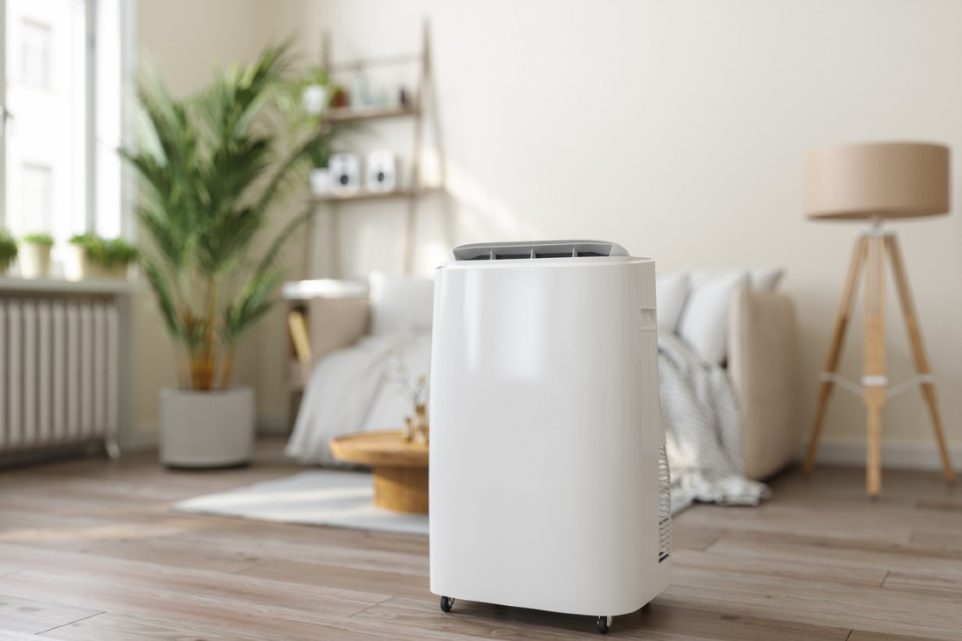How Do Portable Air Conditioners Work? An Informative Guide

When the summer heat becomes unbearable, portable air conditioners come to the rescue, offering a convenient and efficient solution for cooling individual rooms or spaces. These compact and versatile units provide flexibility without the need for a central cooling system. But have you ever wondered how they work?
In this informative guide, we’ll delve into the inner workings of portable air conditioners, exploring the science behind their cooling capabilities. By understanding the basic components, the cooling process, and the difference between dual-hose and single-hose units, you’ll be able to make informed decisions when choosing a portable air conditioner to keep you cool and comfortable.
Understanding the Basic Components
Before diving into how portable air conditioners work, let’s familiarize ourselves with their basic components. A typical portable air conditioner comprises the following parts:
Compressor
The compressor is the heart of the air conditioner. It pressurizes and circulates the refrigerant, facilitating heat exchange and cooling.
Evaporator
The evaporator is responsible for absorbing heat from the surrounding air and evaporating the refrigerant, transforming it into a low-pressure, cool gas.
Condenser
The condenser is where the absorbed heat from the air gets released to the outside environment. It condenses the refrigerant back into a high-pressure, hot liquid.
Fan
The fan assists in the circulation of air and ensures that warm air from the room blows over the evaporator. It also ensures that cool air releases back into the room.
Air Filter
The air filter captures dust, debris, and pollutants from the air, ensuring cleaner and healthier indoor air quality.
The Cooling Process
The cooling process in a portable air conditioner begins with the compressor. The refrigerant, typically a chemical compound called hydrofluorocarbon (HFC), compresses, raising its pressure and temperature. The hot, high-pressure refrigerant then moves to the condenser, where it releases heat to the outside air. As a result, the refrigerant condenses into a high-pressure, high-temperature liquid.
The high-pressure liquid refrigerant then flows to the expansion valve or capillary tube, where it undergoes a pressure drop, transforming it into a low-pressure, cool gas. This cooled refrigerant is then directed to the evaporator, where it absorbs heat from the indoor air. The heat energy from the room causes the refrigerant to evaporate into a low-pressure gas, and the cooled air then releases into the room.
Dual Hose vs. Single Hose Portable Air Conditioners
Dual Hose Portable Air Conditioners
These units have two separate hoses, one for intake and one for exhaust. One hose draws in air from outside to cool the condenser, and the other expels hot air back outside. Dual-hose portable air conditioners are more energy-efficient because they don’t create negative pressure inside the room, and they provide better cooling performance.
Single Hose Portable Air Conditioners
Single hose units have only one hose that serves as both the intake and exhaust. They draw air from the room for cooling, which creates negative pressure inside the room. This can lead to warm air pulling in from other areas, reducing their overall cooling efficiency.
Dehumidification and Air Filtration
Portable air conditioners not only cool the air but also help to dehumidify it. As the warm air passes over the evaporator coil, moisture condenses and collects in a drip pan or reservoir. Some portable air conditioners even come with a built-in dehumidifier mode to tackle excess humidity, creating a more comfortable indoor environment.
Portable air conditioners also feature air filters that capture dust, pet dander, and other particles from the air, helping to improve indoor air quality. And by regularly cleaning or replacing the air filter, you’ll ensure optimal performance and cleaner air circulation.
Conclusion
Portable air conditioners are a versatile and effective cooling solution for individual rooms or spaces. By understanding the basic components and the cooling process behind these units, you’ll be able to select the right portable air conditioner for your needs. Whether you opt for a dual-hose or single-hose unit, portable air conditioners offer convenience, energy efficiency, and the comfort of a cool and pleasant indoor environment during the hottest months.
Decades of Combined Expertise
Best Buy Guidebook is a culmination of online publishing lessons learned. From SEO to paid ads, our team has experienced the highest of highs and the lowest of lows. Our goal now is simple: Arm readers with the most information possible.
